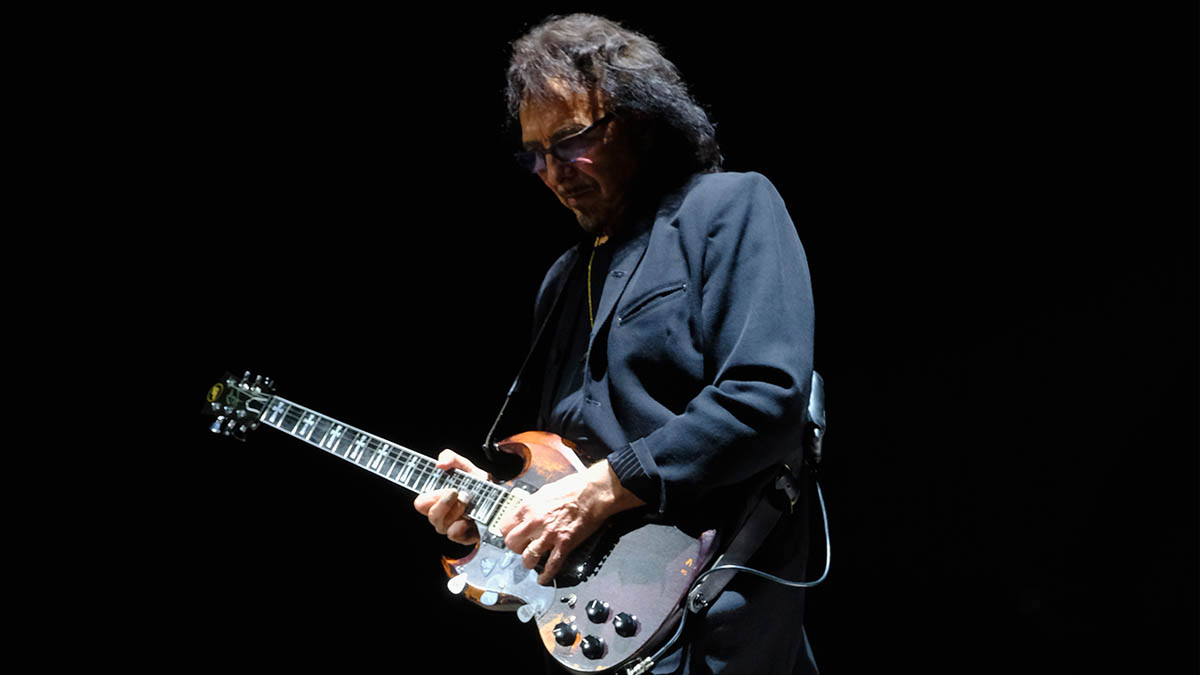
Black Sabbath well and truly put heavy metal on the map in 1970 with their self-titled album. From this moment, Tony Iommi’s snarling, overdriven tone, powerchord riffs, and hammer-on sequences paved the way for things to come.
Across the decades, Iommi’s rhythm guitar parts planted the seed for numerous metal subgenres – from the slow, doomy riffs of Into The Void, to the thrashier down-picked progressions in Symptoms Of The Universe, and the weighty, stoner metal guitar lines of Sweet Leaf.
During Ronnie James Dio’s time in Black Sabbath, the band enjoyed higher-tempo tracks that allowed Iommi to explore more technically challenging parts, such as quick powerchord sequences that slide back and forth to create the track’s melodic shape.
In this article we’ll feature two mini pieces to show key elements of Iommi’s diverse and iconic rhythm guitar style.
Get the tone
Amp Settings: Gain 6, Bass 6, Middle 7, Treble 7, Reverb 3
Iommi’s classic tone came via a Gibson SG loaded with P90s. This offered single-coil dynamics alongside the midrange weight of humbuckers. His guitar amp is a Laney head set to a moderate level of gain, with a treble boost pedal added to tighten up the low end and bring some extra bite. For this lesson, the bridge pickup was used with the above amp settings.
Example 1.
The opening sequence features powerchords with hammer-ons to the highest notes in each shape. This brings energy and momentum via notes that sit right under the barring finger. During the Pentatonic run in bars 3-4, use a ‘down, hammer-on/pull-off, up’ picking motion as you play through each three-note grouping.
Example 2.
Here we move between single-note riffs and fast, sliding powerchords. Focus on the accuracy of your picking hand while playing the string-skipped phrases in bars 1-2, and the arpeggios during last four bars. For the sliding powerchords, anchor your thumb on the back of the neck as your fretting hand pivots between positions.







